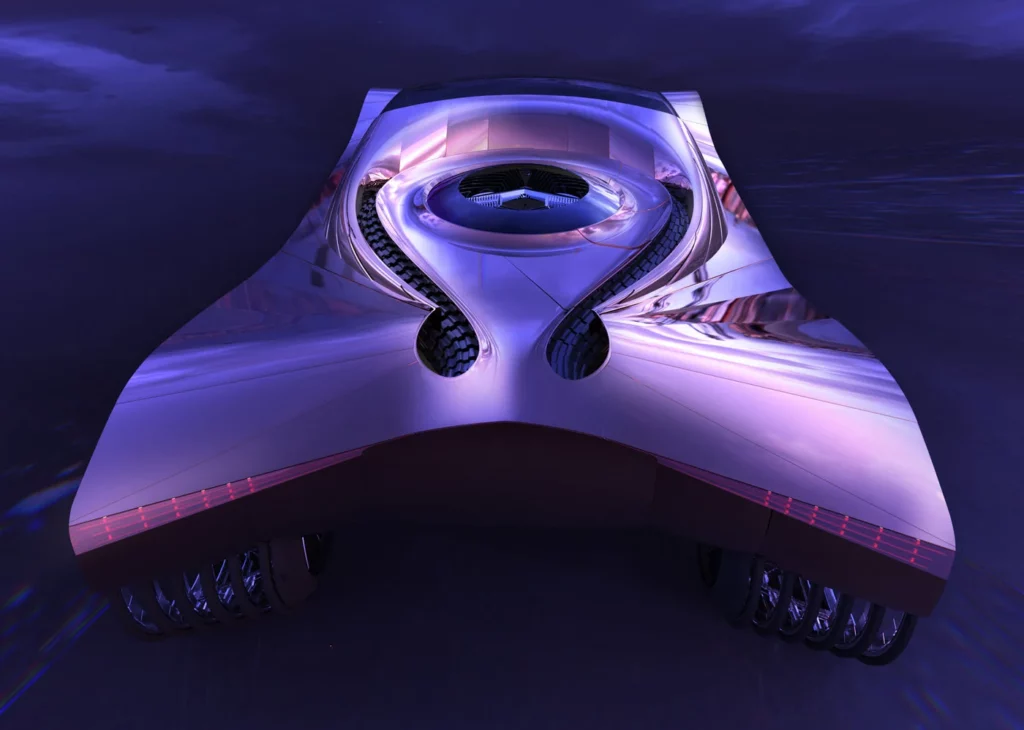In a world racing towards clean and sustainable transportation, a novel concept has captured the imagination of environmentally conscious drivers: the thorium-powered car. This groundbreaking technology, proposed by Laser Power Systems, claims to revolutionize the automotive industry by offering a vehicle that could run for 100 years without refueling.
The claim of this Thorium Car also comes with a video, where Cenk Uygur and Ana Kasparian of The Young Turks briefly explain the backdrop and discuss the concept of Thorium Car. According to them, thorium reactors can be much smaller, and if put to use properly, can work at low pressure and lower the chances of danger to humans and environment when compared to a uranium-based reactor.
The Thorium: A Fuel Like No Other
Thorium, a naturally occurring radioactive element, is known for its immense energy density. Laser Power Systems has harnessed this property to create a concept for a thorium-powered car engine. The company’s innovative design utilizes bits of thorium to generate a laser beam that heats water, produces steam, and powers an energy-producing turbine. According to the company, just 8 grams of thorium could power a car for a century.

The element’s extraordinary energy potential is highlighted by the fact that a small sample of thorium contains 20 million times more energy than a similarly sized sample of coal. This makes it an ideal candidate for long-term energy production.
ALSO READ: Diesel Engines Successfully Converted to Run on 90% Hydrogen, Cutting CO2 Emissions by 85%
Laser Power Systems, led by CEO Dr. Charles Stevens, asserts that thorium-powered engines could offer unparalleled efficiency. “One gram of thorium yields more energy than 7,396 gallons of gas,” the company claims. Despite these bold assertions, Dr. Stevens admits that thorium engines won’t be in consumer cars anytime soon. Automakers are currently reluctant to adopt this technology, he says, so the focus is on powering other sectors like restaurants, hotels, office buildings, and small towns where electricity is scarce.

How It Works
The thorium car concept involves a high-tech process where thorium is used to generate a laser that heats water into steam. This steam then drives a turbine, producing energy to power the car. The technology aims to provide several key benefits:
- Unparalleled Range: A thorium-powered car could theoretically travel millions of miles on a single “refuel,” eliminating the need for frequent stops at gas stations or charging points.
- Zero Emissions: The process produces no harmful greenhouse gases, significantly reducing the car’s environmental footprint.
- High Efficiency: Thorium’s energy density is staggeringly high, making it a far more efficient fuel than traditional options.
ALSO READ: Cummins Unveils Powerful New 15-Liter Hydrogen Engine, 290 hp for Heavy-Duty Vehicles
Safety Concerns
Despite the promising potential, the concept of a thorium-powered car faces significant skepticism. The primary concern is the radioactive nature of thorium. While Laser Power Systems assures that the radiation can be shielded by a single sheet of aluminium foil, the long-term safety and regulatory standards for such technology remain unclear.

Additionally, the feasibility of producing thorium-powered vehicles on a large scale poses another challenge. Building the necessary infrastructure would require substantial investment and a complete overhaul of current transportation systems. Critics also question the practicality of incorporating thorium technology into consumer cars, pointing out that it might be more suitable for stationary energy generation rather than mobile applications.
A Historical Context
The idea of a thorium-powered car is not entirely new. In 2009, an art project by Loren Kulesus introduced the Cadillac World Thorium Fuel concept (Cadillac WTF), a futuristic design celebrating Cadillac’s 100th anniversary. This concept, however, was more of an artistic statement than a practical prototype. Charles Stevens later adopted this art project, adding layers of speculative technology to it.

The discussion around thorium cars is marked by a mix of excitement and skepticism. While the potential benefits are immense, critics argue that the concept is too good to be true. The lack of transparency and detailed technical information fuels doubts about the feasibility of thorium-powered vehicles.
Moreover, thorium’s application in other fields, such as small-scale nuclear reactors, has shown promise but also highlighted significant regulatory and safety hurdles. These challenges need to be addressed before thorium can be considered a viable option for powering cars.








